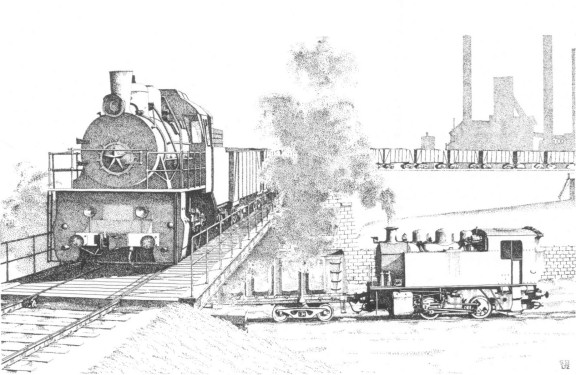
| THE INDUSTRIAL RAILWAY RECORD |
© APRIL 1973 |
RUSSIAN BEYERS
SID BARNES

In 1932 Beyer Peacock built for Russia the well-known and often illustrated 5ft 0in gauge 4−8−2 + 2−8−4 Garratt (works number 6737), an enormous locomotive with 22¾in by 28in cylinders and 4ft 117/8in coupled wheels. Shipped to Leningrad, it formed the sole example of class Ya−01 (Russian Я−01), running trials on the Sverdlovsk - Chelyabinsk line of the South Urals railway. According to the first edition of 'Russian Steam Locomotives' by H.M. le Fleming and J.H. Price, the development costs of this locomotive were offset by orders placed with Beyer Peacock for a batch of 'industrial' 0−6−0 tanks, class Ta. These locomotives, possibly for use in the Kuznetsk and Magnitogorsk iron ore regions, I have not been able to positively trace but they were possibly Beyer Peacock 6739-6764 of 1933, described as 5ft 0in gauge 0−6−0 tanks purchased by 'Civros Ltd for Machtransimport'. The first twenty of these had '3ft 11¼in' wheels and the remainder '3ft 3.57in' wheels.
One of these 0−6−0 tanks is illustrated in le Fleming and Price's book, whilst the illustration following it depicts a 'Heavy 0−4−0T for industrial service'. This is an official Beyer Peacock photograph with the maker's plate easily recognizable, but despite this I have so far been unable to identify this or other similar locomotives. Did the 0−4−0 tank actually belong to a quite separate earlier or later order, or is it possible that the second batch of 0−6−0 tanks (Beyer Peacock 6759-6764) with smaller wheels were in fact 0−4−0 tanks, having been wrongly recorded? Perhaps more knowledgeable readers can help.
Whatever the truth of the matter, I have chosen one of the 0−4−0 tanks as the subject of my sketch, which depicts it at work near a Russian steelworks. The drawing is based entirely on the official Beyer Peacock works photograph, except that I have removed the British style headlamp from the smokebox door. The other locomotive is a standard class E 0−10−0 of which just under eleven thousand were built (with variations) between 1912 and about 1952.